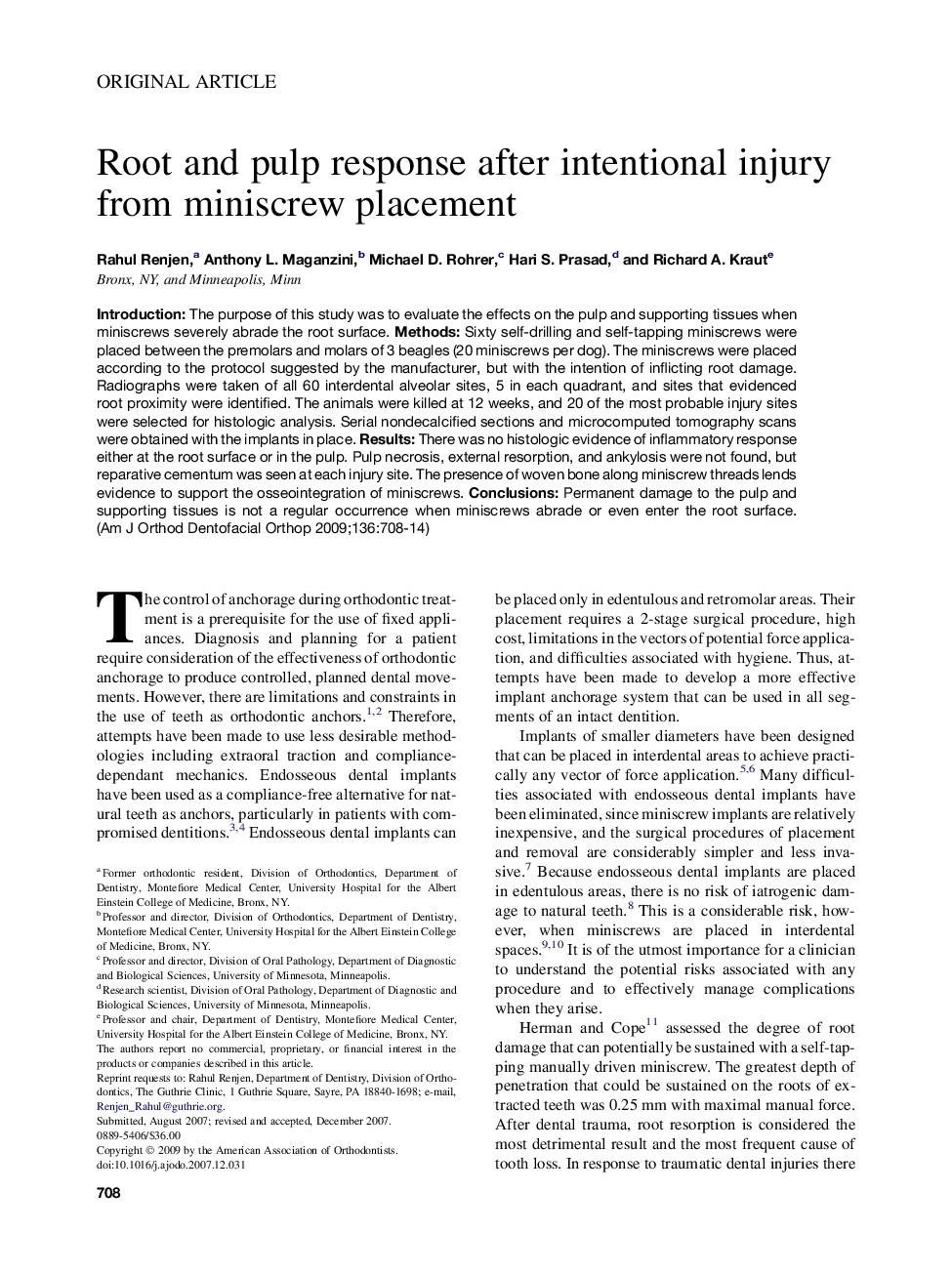| Article ID | Journal | Published Year | Pages | File Type |
|---|---|---|---|---|
| 3118051 | American Journal of Orthodontics and Dentofacial Orthopedics | 2009 | 7 Pages |
IntroductionThe purpose of this study was to evaluate the effects on the pulp and supporting tissues when miniscrews severely abrade the root surface.MethodsSixty self-drilling and self-tapping miniscrews were placed between the premolars and molars of 3 beagles (20 miniscrews per dog). The miniscrews were placed according to the protocol suggested by the manufacturer, but with the intention of inflicting root damage. Radiographs were taken of all 60 interdental alveolar sites, 5 in each quadrant, and sites that evidenced root proximity were identified. The animals were killed at 12 weeks, and 20 of the most probable injury sites were selected for histologic analysis. Serial nondecalcified sections and microcomputed tomography scans were obtained with the implants in place.ResultsThere was no histologic evidence of inflammatory response either at the root surface or in the pulp. Pulp necrosis, external resorption, and ankylosis were not found, but reparative cementum was seen at each injury site. The presence of woven bone along miniscrew threads lends evidence to support the osseointegration of miniscrews.ConclusionsPermanent damage to the pulp and supporting tissues is not a regular occurrence when miniscrews abrade or even enter the root surface.
